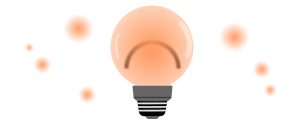All you need to know about this well-known strategy to trade effectively

An Introduction to Candlestick Patterns: The Essentials
So, you’ve decided to dive into the world of technical analysis and want to get started with candlestick patterns. Excellent choice! Candlestick patterns have been used for centuries to help identify potential price reversals or continuations in the markets. Learning how to spot key candlestick formations can give you a trading edge and help you navigate the volatile ups and downs. This intro guide will provide an overview of the most essential candlestick patterns you need to know to get started. We’ll explore what candlesticks are, how they’re formed, and the psychology behind several of the most common bullish and bearish patterns. By the end, you’ll have the foundational knowledge to begin detecting key candlestick patterns and incorporating them into your trading strategy. Let’s light this candle!
What Are Candlestick Patterns and Why Are They Important for Traders?
Candlestick patterns are visual patterns that form on stock charts. They are important for traders because they can signal when a stock price is likely to rise or fall.
What are candlestick patterns?
Candlestick patterns are formations made up of one or more candlesticks that indicate a potential reversal or continuation of a trend. The candlesticks show the open, close, high and low prices of a stock for a specific period. When certain candlesticks cluster together, they form a pattern that suggests what might happen to the stock price next.
Why do patterns matter?
- They help identify reversal points: Patterns like doji, hammers and shooting stars often signify a reversal from an uptrend to a downtrend. Spotting these early can help you get out of a position at a good price.
- They confirm trend continuations: Patterns such as ascending triangles, flags and pennants indicate an uptrend is likely to continue, so you can hold or add to your position.
- They improve your timing: Knowing how to spot key patterns helps ensure you are getting into and out of positions at optimal points, allowing you to maximize profits.
- They reduce risk: Patterns act as an early warning system, allowing you to set stop losses in case the expected move does not materialize. You can cut losses quickly before they escalate.
In summary, candlestick patterns add an extra layer of insight into price action. Used properly, they can significantly improve your trading results. With regular practice, spotting the most important patterns will become second nature.
The Most Common and Reliable Candlestick Patterns for Day Trading
When day trading, knowing how to identify the most reliable candlestick patterns can help give you an edge. Here are a few of the top patterns to look for:
The Hammer
This pattern indicates a potential reversal from a downward trend to an upward trend. It consists of a long lower shadow and a small real body at the top of the range. If it appears after a downtrend, it suggests the selling pressure may be over and buyers are stepping in.
The Engulfing Pattern
This pattern signifies a potential reversal of trend. It contains two candles where the second real body completely engulfs the previous real body. An engulfing bullish pattern appears in a downtrend, while an engulfing bearish pattern occurs in an uptrend. Either suggests the trend may be reversing.
The Doji
The doji is a candlestick with a very small real body that appears as a horizontal line. It represents indecision in the market, showing an equal amount of buying and selling pressure. When a doji forms after a prolonged uptrend or downtrend, it can signal a reversal may be on the horizon. However, doji often need confirmation from the next candle to indicate a trend change.
By familiarizing yourself with these patterns, you’ll have a better chance of spotting opportunities and navigating the volatility of day trading. With regular practice, identifying these reliable setups can become second nature.
How to Read and Interpret Candlestick Charts to Identify Patterns
Once you understand the basic anatomy of a candlestick, you can start identifying patterns to help determine potential price movements. Candlestick patterns are formations of one or more candlesticks that provide insight into the emotions of the market and the potential direction of a stock.
Identifying Bullish and Bearish Patterns
The two most important types of patterns to recognize are bullish and bearish. Bullish patterns indicate the stock may be heading upward, while bearish patterns suggest a potential downturn. Some common bullish patterns include the Hammer, Morning Star, and Bullish Engulfing. Bearish patterns include Shooting Star, Evening Star, and Bearish Engulfing.
To spot these patterns, look for shapes that stand out or candles that engulf previous candles. For example, a Bullish Engulfing pattern consists of a large green candle that completely engulfs the previous red candle. This shows the bulls have overpowered the bears, indicating a potential upswing. An Evening Star is a small green candle followed by a large red candle, which “engulfs” the previous bullish sentiment. This bearish pattern warns the stock may be poised to drop in price.
With regular chart review, these patterns will become second nature. Start by focusing on just a few of the most common patterns, then build up your knowledge over time. The ability to quickly spot important patterns is what separates novice traders from experts. Remember, candlestick patterns are most significant when found at reversal points, resistance levels or trend lines. They help confirm a potential change in direction, so always consider the overall context of the chart.
Practice Makes Perfect
The only way to master reading candlestick charts is through practice. Pick a few stocks you’re interested in and review their candlestick charts regularly. Try identifying any patterns you see and then check to see if the predicted price movement actually occurs. Over time, you’ll get better at spotting the most important signals. Candlestick patterns, combined with other technical analysis tools, can help give you an edge in the markets.
Conclusion
That covers the basics of candlestick patterns. Now you have a good foundation to start identifying patterns on stock charts and making more informed trading decisions. Remember, candlesticks are not a crystal ball, but when used properly, they can provide useful insights into the psychology of the market and help determine potential reversal or continuation points. The key is to look for multiple confirming patterns, consider the overall chart context, and combine candlesticks with other technical indicators to improve your timing and probability of success. Candlestick patterns have been used for centuries and continue to offer valuable information for technical traders today. With practice, these patterns will become second nature and an integral part of your trading toolkit.
Test
Where are the Japanese candlesticks from?



